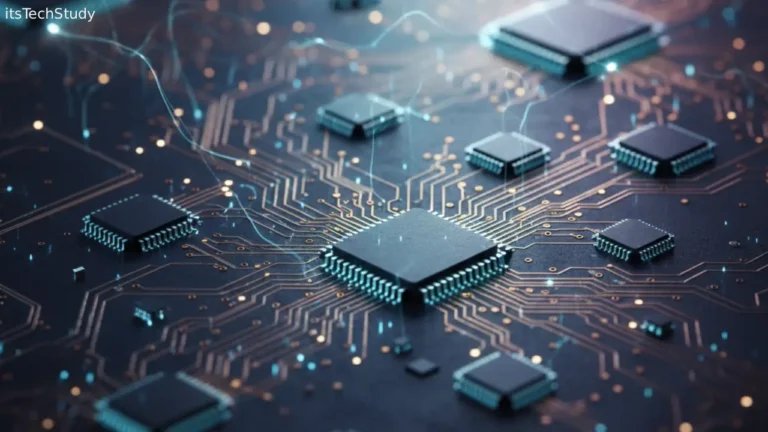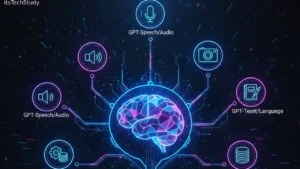Introduction: The Next Evolution in Our Hands
Over the past decade, mobile phones have evolved from simple communication tools into powerful, all-in-one digital companions. We’ve witnessed major transformations – from 3G to 5G connectivity, from fingerprint to facial recognition, and from standard displays to foldable and rollable screens. But 2025 is different. The innovations arriving this year are not just futuristic concepts; they are real, accessible, and reshaping how we live, work, and interact with technology.
One of the most anticipated advancements in 2025 is the Apple iOS 26.1 update, rumored to redefine smartphone intelligence and customization. Meanwhile, Android manufacturers are focusing on hyper-connectivity, on-device AI, and sustainability. The race isn’t only about better specs anymore – it’s about smarter experiences, environmental responsibility, and seamless integration with the expanding digital ecosystem.
So, what exactly does the future of mobile innovation look like in 2025? Let’s explore the technologies that are already turning science fiction into daily reality.
1. Foldable and Rollable Displays: The Shape of the Future
Once considered experimental, foldable and rollable displays have become mainstream in 2025. Companies like Samsung, Oppo, and Motorola have refined flexible OLED technology, eliminating the fragile creases that plagued early versions.
What’s New in 2025?
- Rollable screens that expand from phone to tablet with a simple swipe.
- Self-healing materials that repair micro-scratches automatically.
- Durable hinge systems designed to last over 500,000 folds.
Pros and Cons of Foldable Tech
Pros:
- Larger screen real estate in a compact form
- Enhanced multitasking and entertainment experience
- Futuristic design appeal
Cons:
- Higher manufacturing costs
- Slightly thicker form factor
- Limited app optimization in some cases
2. On-Device Artificial Intelligence (AI): Smarter, Faster, More Private
AI is the heartbeat of 2025’s mobile innovation. But unlike earlier years, where cloud-based AI dominated, the trend now is on-device intelligence – meaning your smartphone processes data locally rather than relying on servers.
This shift improves privacy, speed, and battery efficiency. Both Apple’s iOS 26.1 update and Google’s Android 15 feature dedicated neural engines capable of real-time translation, image enhancement, and personalized recommendations without sending data to the cloud.
Key Features of AI-Driven Phones
- Context-aware voice assistants that understand tone and intent
- Predictive charging and app usage optimization
- Real-time scene detection for photography
- AI health monitoring powered by sensor fusion
| Feature | Apple iOS 26.1 Update | Android 15 (AI Core) |
|---|---|---|
| Voice Interaction | Contextual Siri 3.0 | Gemini AI Assistant |
| Image Processing | Neural Engine 2.0 | Tensor Processing Unit |
| Privacy Focus | On-device encryption | Federated learning |
| Release Timeline | iOS 26.1 release date: March 2025 | Android 15: April 2025 |
3. Apple iOS 26.1 Update: Redefining Mobile Experience
Apple’s iOS 26.1 update is one of the biggest software evolutions in years. The update — expected to roll out globally after its release date in March 2025 – introduces intelligent design tweaks, adaptive UI, and deeper integration with Apple Vision and Watch ecosystems.
Highlights of iOS 26.1
- Adaptive Home Screen: Widgets and icons rearrange automatically based on user habits.
- AI-Generated Wallpapers: Dynamic themes that respond to weather, time, and emotion.
- Battery Health Guardian: AI that predicts wear patterns and optimizes charging.
- Ultra-Secure Face ID 4.0: Improved under-display recognition, even with sunglasses.
- Universal Device Sync: Seamless connectivity between iPhone, Vision Pro, and Mac.
Why It Matters
The iOS 26.1 update is not just about incremental improvements – it’s Apple’s statement that the smartphone is evolving into a true intelligent assistant. This move challenges Android’s AI dominance and sets a new standard for user-centric innovation.
4. Satellite Connectivity: Mobile Networks Without Boundaries
While 5G continues to expand, satellite connectivity is emerging as a revolutionary step toward universal communication. Leading brands like Apple, Huawei, and Qualcomm have partnered with satellite providers to ensure connectivity in remote or disaster-prone areas.
Benefits of Satellite-Enabled Phones
- Emergency SOS messages anywhere on Earth
- Real-time navigation even without cellular data
- Disaster recovery communication during outages
By 2025, several flagship devices now include dual-network chips that switch seamlessly between cellular and satellite signals, ensuring you stay connected — no matter where you are.
5. Eco-Friendly Smartphones: Sustainability Meets Innovation
Sustainability is no longer a marketing buzzword; it’s a necessity. Smartphone manufacturers are rethinking their designs to reduce electronic waste, carbon footprint, and energy consumption.
Green Innovations in 2025
- Modular components for easy repair and upgrade
- Recycled aluminum and bio-based plastics in phone bodies
- Energy-efficient processors using less than half the power of 2020 chips
- Eco-charging features that prevent overcharging and save battery health
Pros and Cons of Eco-Friendly Devices
Pros:
- Environmentally responsible choice
- Lower long-term energy consumption
- Supports circular economy
Cons:
- Slightly higher upfront cost
- Limited availability of replacement modules in early markets
6. Augmented Reality (AR) Integration: Blending Digital and Real Worlds
Thanks to advanced processors and depth sensors, AR is finally practical in 2025. Apple’s ecosystem, powered by iOS 26.1, now seamlessly syncs AR experiences with Vision Pro, creating an immersive environment for gaming, shopping, and design.
Android counterparts like Samsung’s AR Zone and Google Lens 2.0 also deliver real-time translation, navigation overlays, and virtual try-ons.
Top AR Use Cases in 2025
- Virtual interior design and architecture visualization
- AR-based education and training modules
- Enhanced navigation and object recognition
- Social AR filters powered by AI
7. The Rise of Biometric Security: Beyond Fingerprints
Biometrics in 2025 have transcended fingerprint sensors. Modern devices use multi-layer biometric systems, including vein mapping, behavioral analysis, and heart rhythm recognition.
New Security Standards
- Face ID 4.0: Detects 3D facial geometry under varied lighting.
- Pulse-based authentication: Uses smartwatch data to verify identity.
- AI-driven threat detection: Blocks suspicious apps automatically.
With cyber threats increasing, these features provide an extra layer of security while maintaining user convenience.
8. Quantum and Graphene Processors: Powering the Future
Traditional silicon-based chips are reaching their physical limits. Enter graphene processors – ultra-efficient, flexible, and capable of running at speeds beyond 5 GHz while consuming minimal energy.
Some premium 2025 smartphones are experimenting with quantum-accelerated AI cores, enabling faster computations for encryption and neural modeling. These chips drastically reduce lag in gaming, streaming, and multitasking.
| Processor Type | Performance Boost | Energy Savings | Availability (2025) |
|---|---|---|---|
| Graphene-based | Up to 50% faster | 40% more efficient | Limited flagship models |
| Quantum hybrid | 2x AI computation speed | 30% more efficient | Research phase |
9. Hyper-Personalization: Phones That Understand You
Smartphones are no longer passive tools – they’re adaptive companions. Using machine learning, devices in 2025 can now predict user intentions, moods, and routines.
For example:
- AI mood detection adjusts brightness and sound based on emotional cues.
- Smart scheduling learns from your calendar and habits.
- Personalized news feeds powered by on-device AI avoid echo chambers.
The result? A truly personalized experience that saves time, boosts productivity, and feels intuitively human.
10. The Future Beyond 2025: What’s Coming Next
Looking ahead, the next wave of innovations will blur the line between mobile devices and wearable or immersive tech. Expect holographic displays, neural interface controls, and AI-powered digital twins that mirror your preferences across devices.
By 2030, your “smartphone” might not even look like a phone – it could be an AI-enabled companion integrated into smart glasses, wristbands, or even holographic projectors.
Conclusion: The Future Is Already in Your Pocket
The innovations shaping mobile technology in 2025 prove that the “future” isn’t distant – it’s already unfolding. From Apple’s iOS 26.1 update to foldable screens, AI-driven performance, and eco-conscious designs, smartphones are evolving into intelligent, sustainable, and deeply personal companions.
As we move beyond 2025, one thing is certain – mobile technology will continue to redefine how humanity connects, learns, and experiences the world. The only question left is: Are you ready to upgrade to the future?
FAQs About Mobile Phone Innovation 2025
Q1: What is the main focus of smartphone innovation in 2025?
Ans: The primary focus is AI-driven intelligence, sustainability, and seamless ecosystem integration. Brands are prioritizing user-centric design, privacy, and efficiency rather than just raw specifications.
Q2: When is the Apple iOS 26.1 release date?
Ans: The iOS 26.1 release date is expected in March 2025, rolling out in phases worldwide. It brings adaptive design, on-device AI, and better ecosystem sync with Apple Vision and Mac devices.
Q3: Are foldable phones durable now?
Ans: Yes. The 2025 generation of foldable devices uses improved flexible OLED materials and hardened hinge mechanisms tested for over half a million folds.
Q4: What are eco-friendly smartphones?
Ans: These are devices designed with recycled materials, energy-efficient chips, and modular repairability, helping reduce e-waste and support sustainable production.
Q5: How does on-device AI differ from cloud AI?
Ans: On-device AI performs data processing locally, improving speed, privacy, and battery efficiency since user data doesn’t need to leave the device.
Q6: What’s next after smartphones?
Ans: Experts predict a shift toward wearable, ambient, and holographic technologies that merge physical and digital realities, eventually replacing traditional smartphones by the 2030s.












No Comments Yet
Be the first to share your thoughts.
Leave a Comment